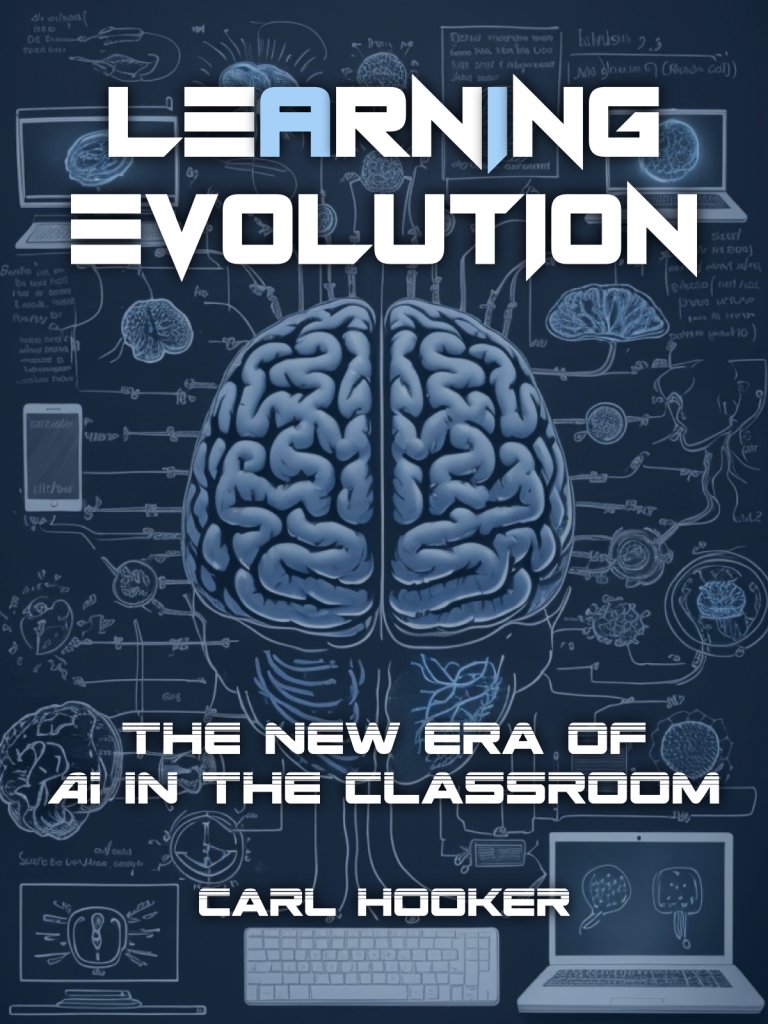5 Steps to Creating an AI-Ready Learning Environment
Administrators can use this blueprint to prepare their schools to take advantage of what AI will have to offer.
Your content has been saved!
Go to My Saved Content.What follows are the five steps a teacher or administrator should take to truly evolve their school or classroom into a high-quality AI-enhanced learning environment. You’ve been bombarded with AI knowledge and taken advantage of the K12Leaders community to meet and connect with others traveling on this same journey. This list of next steps has been created by a combination of input from other educational leaders and my own experience when implementing new technology in a school or district.
Step 1: Exploring & Evaluating
At this point you have spent some time exploring the multitude of AI tools mentioned in this book and probably even some others that are out there not contained on these pages. It’s worth taking the time to explore the various platforms, starting with large language models, to see what they can and cannot offer.

If you are an administrator tasked with getting your school staff up to speed on AI, you should start with asking your staff what concerns them and what excites them about the possibility of AI-enhanced learning. Then, you should allow them time to explore some of the tools, keeping in mind that the amount of AI tools already out there can become quite overwhelming. Give teachers a chance to explore and then ask them for feedback on the tools. I would ask staff for feedback via the following essential question: How might using these tools help with teaching and learning?
If you are a teacher or professor exploring this book, you have a slightly different path. You will want to personally explore and vet the various AI tools out there, assuming they follow an acceptable use guideline within your school community. See what simple tasks these tools can possibly solve for you while always being aware that the output is a very good rough draft. Keep that in mind as you explore these tools with your students. As most of these carry 13+ age restrictions, how you explore them might be different depending on the grade that you teach. For younger students, you could demonstrate the use of a tool and then have a discussion about the output. For older students, have them explore (if they haven’t already) some AI tools and then ask them to reflect on this essential question: How might AI help me learn better?
Step 2: Discussing Benefits of AI
There are a bevy of concerns around AI and those should be acknowledged. Students using it to cheat or maybe as a shortcut to finish some assignment is a possibility. However, there are also some benefits when you start to work alongside AI as a copilot in your learning. It’s not going to finish the paper for you or have the difficult phone conversation with a parent. You get out of it whatever you put into it. Asking teachers and students for a list of benefits is a great place to start. Here are just a few that I’ve gathered with the research leading up to this book.
- Save Time: This is the biggest immediate benefit to AI. For teachers it can help generate a unique lesson around a topic. For administrators, it can help them write their next newsletter or aggregate large amounts of data quickly. For students, it can help them get started by brainstorming ideas for their next assignment.
- Personalized Learning: I know, we’ve talked about personalized learning in education for decades, but I think the timing is finally right. Most students now have access to a device, and using AI means they also have their own personal tutor. For teachers, it can create differentiated ways of teaching a topic without having to spend hours researching lesson plans, which goes back to the first point of saving time.
- Assist Students With Learning Challenges: As a parent who has already leveraged AI to help my own daughter’s learning challenge, I see this being the largest benefit to using AI in schools. The idea of a “level playing field” has always been a bit of an apparition in education. But now, if students have age-appropriate access to some of the AI tools mentioned in this book, they might not see learning as a struggle. Instead, they may see learning as an opportunity to shine.
Step 3: Creating Best Practice Guidelines
Exploring tools, discussing concerns, and identifying benefits to AI in schools are prerequisites to building out guidelines with fidelity. Depending on the environment, the best practices around AI use may vary. If you are a teacher of students that can legally use AI, this would entail having an open conversation of when is it acceptable to use AI for an assignment. If you are at a district level, the discussion will center around how to embolden and embrace AI usage responsibly in your schools. This also involves having open forums and discussions with your community and stakeholders around AI, its benefits, and what it means to the future workplace these students are heading into.
Use some of the content of this book along with AI to help develop that first draft of expectations of use. Consider your own community and their values but never forget your school or district’s mission. If I had to hazard a guess, I would say your school or district mission statement has something written to the effect of “preparing kids for the future” and creating a generation of “lifelong learners.” If you truly believe in these statements and believe that artificial intelligence isn’t going away any time soon, then you have to build guidelines and best practices around its use.
Creating your “Expectations for AI Use in Schools” document should not be done in isolation either. Yes, you should use AI to help, but you should also pull in other leaders, teachers, parents, and students to create an AI task force of sorts. Having the varied perspectives of all stakeholders will help build out a cohesive and common sense plan for how to proceed forward with AI- enhanced learning.
Step 4: Changing How We Evaluate Learning
Legendary management consultant Peter Drucker is famous for saying that “culture eats strategy for breakfast.” You can have all the greatest intentions with the usage of AI and guidelines for how it is to be used, but if the teaching and learning practices don’t change, it will not have as great of an impact. Teachers may nod their heads and agree that it will be helpful, but when it comes to actually evaluating what kids are learning, it is sometimes easier to go back to traditional roots. Change is hard.
Having students fill out worksheets or answer quiz questions by pencil and paper will help quell the AI tsunami, but only briefly. To truly evolve into this next era of learning, we need to change some of education’s traditional practices around how we evaluate learning. As I’ve mentioned many times over in this book, traditionally schools evaluate student learning based on a final product. That needs to change. In the classroom there should be time built into the school day for discussion, exploration, discourse, application, and reflection. This process for learning will become the future emphasis of what we need to focus on in schools if we truly want to evolve. Without altering our practices around evaluating learning, all the time invested into planning a strategy around AI-enhanced learning will become null and void.
Step 5: Putting AI Into Practice
That leads us to this final step, actually using AI effectively in (and out) of the classroom. If you have done the legwork of crowd-sourcing an “AI Best Practice” guide and changed the emphasis of evaluation to process over product, then you are ready for AI- enhanced teaching and learning.
As with any tool or strategy, starting with a “vanguard” group of teachers willing to try new things is a great way to start. Using a pilot group of teachers and students to test various platforms as well as identify any potential hazards will help lay a stable foundation before unleashing AI to the entire student population. But you can’t afford to wait this innovation out. These discussions and pilot groups should be happening right now in your schools. We will never truly be able to “stay in front of” technology and innovation, but one thing we can control is how we ultimately utilize it to help our students and their learning.
Once these pilot groups have iterated and tested some of the tools, readjust your school’s best practices based on that feedback. Talk through the pitfalls they might have discovered and what kind of discussions need to take place with students and parents. Discuss student data privacy and other safety concerns with your IT department around these tools. Be prepared to respond when a student inevitably breaks whatever academic integrity standards you’ve put in place around AI. This will happen. Students test the limits and are always looking for shortcuts, but if you’ve truly changed the way you evaluate, cheating with AI won’t be an option.
I am excited to see what the future holds with AI-enhanced learning. It is always important to keep the balance of human and artificial intelligence in the back of our minds, but I do think AI has the potential to help each and every student in the future.
The future should always be our focus in education, not the past.
It’s time to evolve.
Adapted with permission from Hooker, C. (2023). Learning Evolution. Austin, USA: Publisher: XFactorEDU Publishing.
